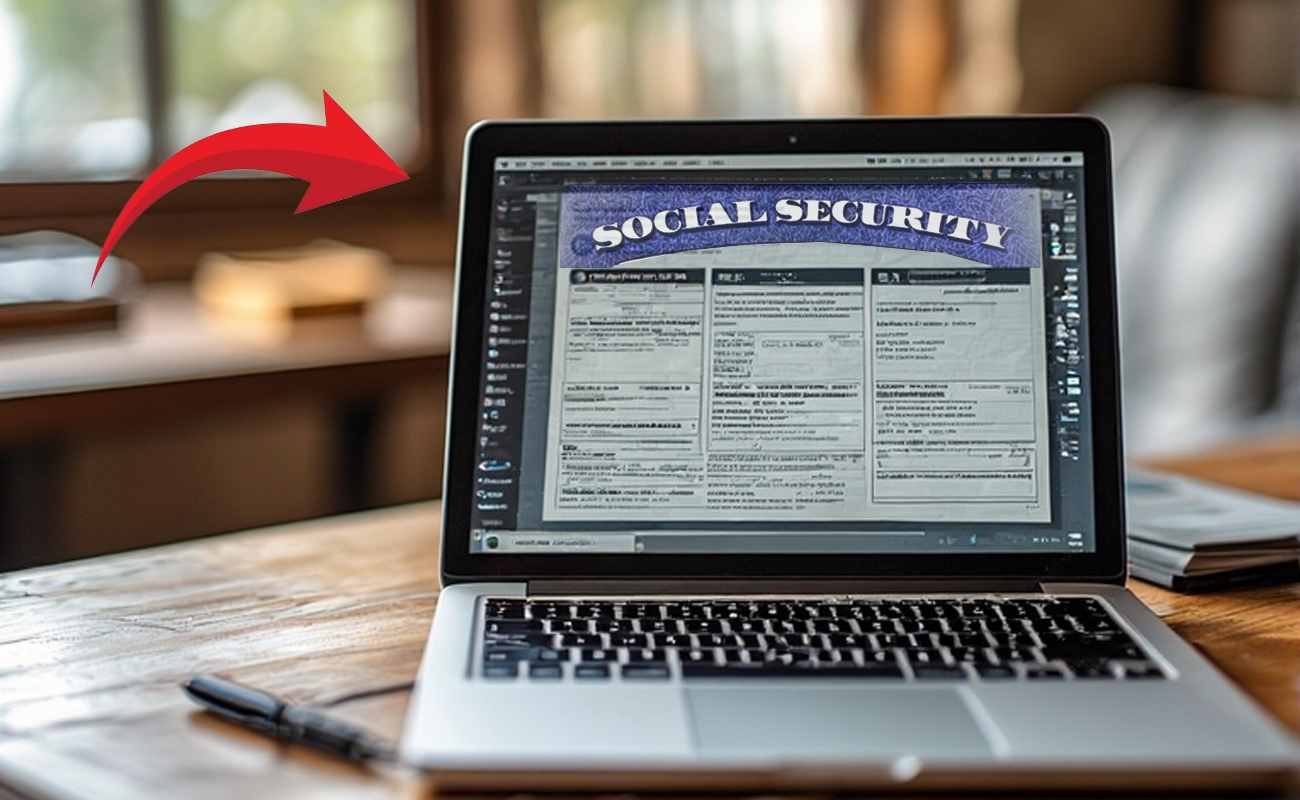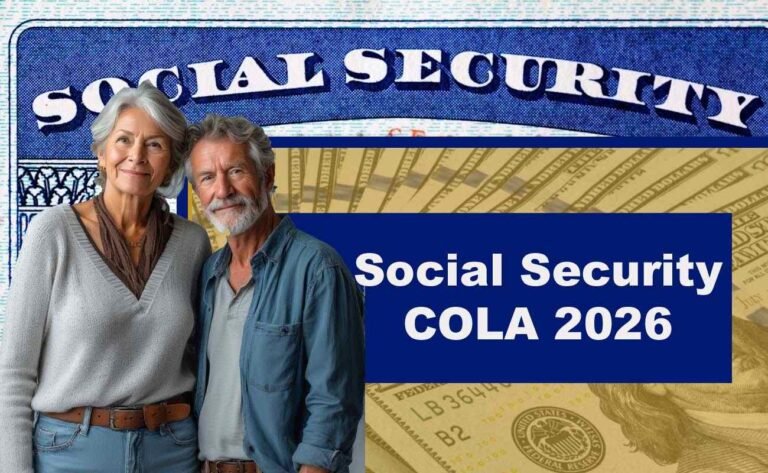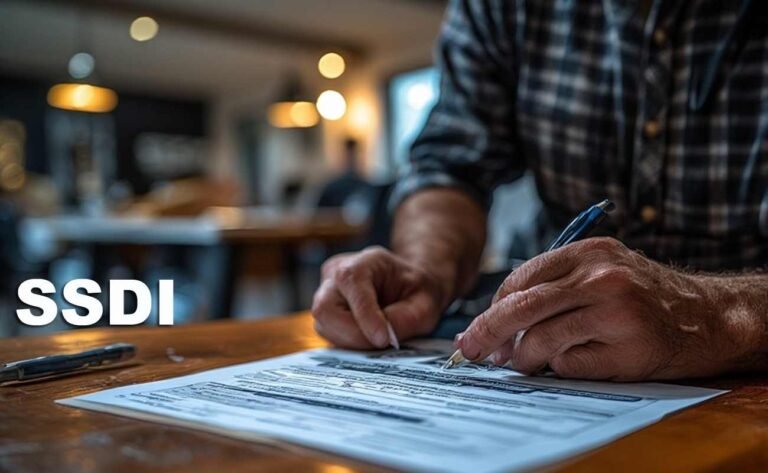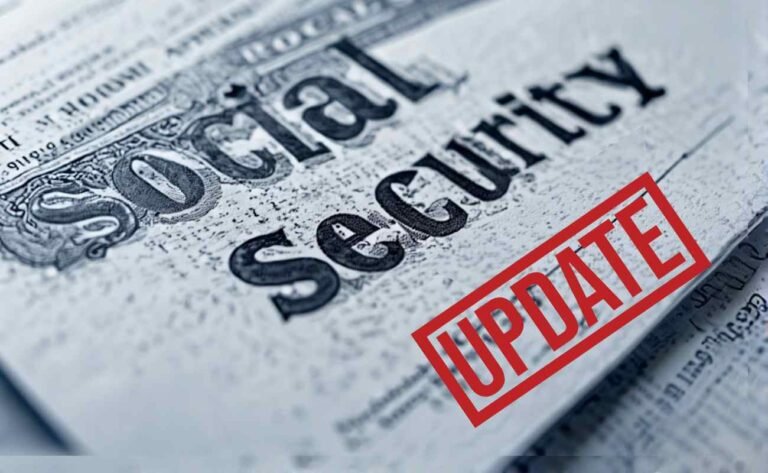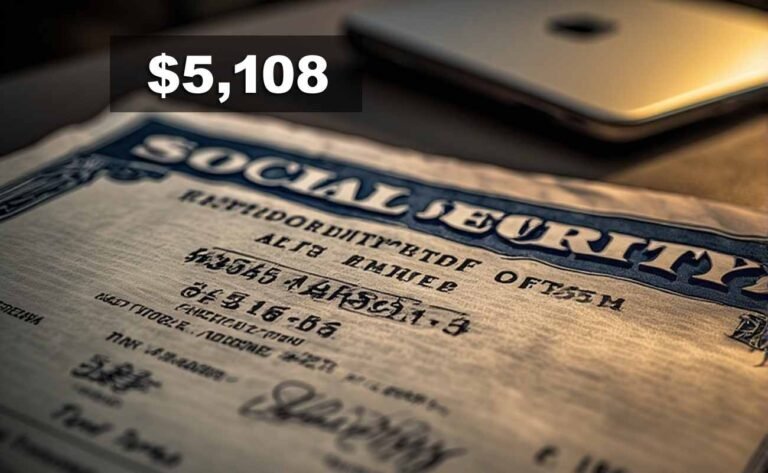Why Social Security Is Forcing 500,000 Off Paper Checks: SSA Deadline – Social Security Digital Payment Switch by Sept. 30, 2025
The Social Security Administration (SSA) is mandating a full shift to electronic payments for all benefit recipients, ending paper checks entirely starting September 30, 2025. This change affects around 500,000 Americans, mostly older adults who still rely on mailed checks for their Social Security benefits, Supplemental Security Income (SSI), or disability payments. The move aims to boost security, cut costs, and speed up delivery, as electronic transfers reduce fraud risks and save taxpayers money compared to printing and mailing checks. If you haven’t switched yet, you must act before the deadline to avoid delays in receiving your funds—options include direct deposit into a bank account or signing up for a Direct Express prepaid debit card.
This transition stems from a long-standing push by the U.S. Treasury and SSA to modernize payments, accelerated by a recent executive order. With less than one percent of the 70 million-plus beneficiaries still getting paper checks, the SSA expects a smooth rollout, but it’s crucial for those impacted to prepare now. Electronic payments not only arrive faster but also eliminate worries about lost or stolen mail. In the sections below, we’ll break down the reasons, steps, and options in detail to help you navigate this change without hassle.
Key Reasons the SSA Is Ending Paper Checks for Benefits
The decision to phase out paper checks isn’t sudden; it’s part of a broader effort to update federal payment systems. Here’s a detailed list of the main drivers behind this policy shift:
- Cost Savings for Taxpayers: Paper checks cost the government about 50 cents each to produce and mail, while electronic transfers cost under 15 cents. With 500,000 checks going out monthly, this adds up to millions in annual savings that can be redirected to other SSA programs.
- Enhanced Security Against Fraud and Theft: Mailed checks are 16 times more likely to be lost or stolen than digital deposits. Switching to electronic methods protects beneficiaries from identity theft and ensures funds reach the right hands without interception.
- Faster and More Reliable Delivery: Electronic payments hit accounts on schedule, often the same day they’re issued, unlike paper checks that can take days or weeks to arrive, especially during holidays or postal delays.
- Environmental and Efficiency Benefits: Going digital reduces paper waste and streamlines SSA operations, allowing staff to focus on claims processing rather than check handling.
- Compliance with Federal Mandates: This aligns with Treasury Department rules dating back to 2013, now fully enforced via a 2025 executive order to eliminate exemptions for most recipients.
- Response to Rising Digital Adoption: As more seniors go online—over 80% of Americans aged 65+ now use the internet—the SSA sees this as a timely step to match modern habits.
These factors make the switch logical, though it requires some adjustment for those used to traditional methods. I recall helping my aunt transition a few years ago; she was hesitant at first but loved how her payments showed up automatically without trips to the bank.
Who Will Be Impacted by the SSA’s Electronic Payment Mandate?
Not everyone needs to worry, but certain groups are directly affected. Below is a table outlining the key demographics and benefit types involved, based on SSA data showing less than 1% of recipients still use paper checks.
| Group Affected | Estimated Number | Benefit Types | Why They’re Still on Paper Checks |
|---|---|---|---|
| Older Adults (65+) | 400,000+ | Retirement Benefits, SSI | Preference for traditional methods; lack of bank accounts or tech access. |
| Disability Recipients | ~50,000 | SSDI, SSI | Some live in rural areas with limited banking options or face mobility issues. |
| Low-Income Households | ~30,000 | SSI Primarily | Unbanked individuals who avoid fees from traditional accounts. |
| Veterans and Survivors | ~20,000 | Survivor Benefits, VA-Linked SSA | Holdovers from pre-digital eras; some distrust electronic systems. |
| Rural or Remote Residents | Variable (included above) | All Types | Poor internet or banking infrastructure in their areas. |
This table highlights that the change mostly hits seniors and the unbanked. If you’re in one of these categories, check your latest SSA notice for personalized instructions. Transitioning early prevents any hiccups in your monthly income stream.
Step-by-Step Guide: How to Switch from Paper Checks to Electronic SSA Payments
Making the change is straightforward, and the SSA provides multiple ways to do it. Follow this numbered list to get set up before the September 30, 2025, cutoff:
- Create or Log Into Your my Social Security Account: Visit the SSA website and sign up if you haven’t already. This online portal lets you update payment info securely. It takes about 10 minutes and requires your Social Security number, address, and birth date.
- Gather Your Banking Details: For direct deposit, have your bank’s routing number and account number ready. If opting for Direct Express, no bank info is needed—just your personal details.
- Choose Your Payment Method: Decide between direct deposit (faster for banked users) or the prepaid card (ideal if unbanked). You can select this in your account dashboard.
- Submit the Update: Use the “Direct Deposit” section in my Social Security to enter details and confirm. For phone help, call 1-800-772-1213.
- Verify the Change: After submission, you’ll get a confirmation email or letter. Test it by checking your next payment date aligns with electronic delivery.
- Handle Any Issues Promptly: If you encounter errors, like invalid bank info, contact SSA immediately. They have dedicated support for this transition.
- Monitor Your First Electronic Payment: Once switched, log into your bank or card account on payment day to ensure funds arrive.
By following these steps, you’ll avoid interruptions. Many people find it simpler than expected—my neighbor, who’s in his 80s, did it over the phone and hasn’t looked back.
Comparing Electronic Payment Options for Social Security Benefits
The SSA offers two primary ways to receive funds digitally. This table compares them to help you pick the best fit:
| Feature | Direct Deposit | Direct Express Prepaid Debit Card |
|---|---|---|
| Setup Requirements | Bank account details (routing/account numbers) | No bank needed; just apply via SSA or card website |
| Cost | Free; no SSA fees | Free enrollment; small fees for some ATM uses or replacements |
| Access to Funds | Instant deposit into checking/savings | Loaded onto card; use like debit for purchases, bills, or cash withdrawal |
| Security Features | FDIC-insured bank protection | PIN-protected; fraud monitoring by card issuer |
| Best For | Those with existing bank accounts | Unbanked or underbanked individuals |
| Drawbacks | Requires a bank; potential overdraft risks | Limited to card balance; fees for certain transactions |
| How to Enroll | Online via my Social Security or by phone | Call 1-800-333-1795 or visit usdirectexpress.com |
Direct deposit edges out for convenience if you bank regularly, but the card is a solid backup. Either way, both beat waiting for the mail.
Top Benefits of Switching to SSA Electronic Deposits
Beyond the mandate, going electronic has real perks. Here’s a bullet-point breakdown:
- Immediate Access to Money: Funds appear in your account on the exact payment date, no postal wait times.
- Reduced Risk of Loss: No more checks vanishing in the mail or being stolen from your mailbox.
- Easier Budgeting: Automatic deposits make it simple to track income alongside other finances.
- Eco-Friendly Choice: Cuts down on paper use, appealing if you’re environmentally conscious.
- Integration with Other Services: Links seamlessly with online banking apps for alerts and transfers.
- Support for Mobility Issues: Great for those who can’t easily visit banks or post offices.
- Potential for Bonuses: Some banks offer incentives for setting up direct deposit, like waived fees.
These advantages explain why 99% of beneficiaries already use electronic methods. It’s a win for reliability in an unpredictable world.
Common Challenges When Transitioning from Paper SSA Checks and How to Overcome Them
Change can bring hurdles, but solutions exist. This list covers frequent issues and fixes:
- Lack of Internet Access: If online setup feels daunting, call the SSA helpline or visit a local office. They offer in-person assistance.
- No Bank Account: Opt for the Direct Express card—it’s designed exactly for this scenario and doesn’t require banking.
- Fear of Technology: Start small; the my Social Security portal is user-friendly, and tutorials are available on the SSA site.
- Verification Delays: Submit changes early to allow processing time. If delayed, follow up via phone.
- Concerns About Fees: Direct deposit is fee-free; for the card, stick to in-network ATMs to avoid charges.
- Address or Info Changes: Update everything at once in your account to prevent mismatches.
- International Recipients: If abroad, electronic options still work, but confirm with SSA for any country-specific rules.
Addressing these proactively ensures a smooth switch. I’ve seen friends struggle with the tech side, but a quick call to support usually sorts it out.
What Happens If You Miss the SSA Electronic Payment Deadline?
Missing September 30, 2025, could disrupt your benefits. Here’s what to expect in a step-by-step scenario:
- No More Paper Checks Issued: Post-deadline, the SSA stops mailing checks, so your payment won’t arrive via post.
- Temporary Hold on Funds: Benefits might be withheld until you update to electronic, leading to delays.
- Notification from SSA: You’ll receive urgent letters or calls prompting action, with instructions.
- Back Payments Upon Switch: Once enrolled, any held funds get released electronically, often quickly.
- Appeals or Hardships: In rare cases, contact SSA for extensions if you face extreme circumstances, though no broad exemptions apply.
- Long-Term Consequences: Repeated delays could affect your financial stability, so act now.
To avoid this, prioritize the switch. Check related schedules like the Social Security Payment Schedule for 2025 to align your transition.
Frequently Asked Questions About the SSA Paper Check Phase-Out
We’ve compiled this FAQ list based on common queries to clarify the process:
❓ 1. Why is Social Security eliminating paper checks?
The Social Security Administration (SSA) is discontinuing paper checks primarily to enhance security, reduce costs, and improve efficiency. Paper checks are 16 times more likely to be lost, stolen, or compromised during delivery compared to electronic payments . Additionally, processing paper checks costs the government approximately 50 cents per check, while electronic transfers cost less than 15 cents, saving an estimated $750 million annually . This shift also aligns with a 2025 executive order requiring all federal payments to be made electronically .
👥 2. Who is affected by this change?
Approximately 500,000 Americans (less than 1% of all Social Security beneficiaries) who still receive paper checks will be impacted . This group primarily includes:
- Elderly recipients (particularly those over 80) .
- Rural or tribal residents with limited internet or banking access .
- Unbanked individuals without checking or savings accounts .
- People with disabilities or limited digital literacy .
⏰ 3. What is the deadline for switching to electronic payments?
The final deadline to switch from paper checks to electronic payments is September 30, 2025. After this date, paper checks will no longer be issued.
💳 4. What are the alternative payment options?
Beneficiaries have two main options:
- Direct Deposit: Funds are electronically transferred directly into a personal checking or savings account. This is the fastest and most secure option .
- Direct Express® Debit Card: A government-issued prepaid debit card for those without bank accounts. Benefits are loaded onto the card each month, which can be used for purchases, bill payments, and cash withdrawals .
🚨 5. What happens if I don’t switch by the deadline?
If you do not enroll in an electronic payment method or obtain a waiver by September 30, 2025, your benefits may be delayed, held, or temporarily suspended until you set up an approved electronic option . The SSA may automatically enroll some beneficiaries in the Direct Express® program to avoid disruptions .
📵 6. Are there exceptions for those who cannot use electronic payments?
Yes, in extremely rare circumstances, the Treasury Department may grant waivers for individuals facing undue hardship, such as:
- Lack of access to banking infrastructure or internet services .
- Physical or cognitive disabilities that prevent the use of electronic systems .
To request a waiver, beneficiaries must contact the Treasury Department at 855-290-1545 .
🔒 7. How do electronic payments improve security?
Electronic payments significantly reduce the risk of fraud, theft, and loss associated with paper checks. For example:
- Direct deposit and Direct Express® cards eliminate the vulnerability of checks being stolen from mailboxes .
- They provide a digital trail, making it easier to track payments and detect unauthorized activity .
🌐 8. What support is available for transitioning?
The SSA offers multiple resources to help beneficiaries switch:
- Online Enrollment: Through the my Social Security portal or GoDirect.gov .
- Phone Assistance: Call the SSA at 1-800-772-1213 .
- In-Person Help: Visit local SSA offices for guided support .
- Educational Notices: The SSA is mailing instructions and alerts to paper check recipients .
🤔 9. Will this change affect the amount of my benefits?
No. The transition to electronic payments only affects the delivery method of your benefits, not the amount you receive .
📊 Comparison: Paper Checks vs. Electronic Payments
| Aspect | Paper Checks | Electronic Payments |
|---|---|---|
| Cost to Government | ~$0.50 per check | <$0.15 per transfer |
| Security Risk | 16x more likely to be lost/stolen | Highly secure with fraud reduction |
| Delivery Speed | Slow, prone to mail delays | Instantaneous on payment date |
| Accessibility | Requires mailing address and physical retrieval | Requires bank account or prepaid card |
| Environmental Impact | High paper waste and carbon footprint | Eco-friendly and paperless |
💡 Key Takeaways
- The move to electronic payments is a cost-saving, security-focused modernization effort.
- Vulnerable populations (e.g., elderly, unbanked, disabled) may need assistance transitioning.
- Act before September 30, 2025, to avoid benefit disruptions.
- Scams Alert: The SSA will never contact you via email/text to ask for payment or personal details .
Other Queries
- Why is the SSA doing this now? It’s to modernize systems, save costs, and enhance security, fulfilling long-term federal goals.
- How many people are affected? Roughly 500,000, or less than 1% of all beneficiaries.
- Can I keep getting paper checks? No, after September 30, 2025, all must switch; no exemptions for standard cases.
- What if I don’t have a bank? Use the Direct Express card—enroll at SSA Direct Deposit Enrollment.
- Will my payment amount change? No, just the delivery method; amounts stay the same, including any adjustments like the 2025 COLA Increase for Social Security.
- Is Direct Express safe? Yes, it’s government-backed with fraud protection; learn more at Direct Express Official Site.
- What about joint accounts? Direct deposit works for shared accounts; specify during setup.
- How do I track my switch status? Log into my Social Security or call for updates.
For more details, visit the SSA’s official website or call their toll-free number. If you know someone affected, offer help to ensure they transition smoothly.
Additional Tips for Managing Your Social Security Benefits Post-Switch
Once electronic, optimize your setup with these suggestions in a handy list:
- Set Up Alerts: Enable bank notifications for deposit arrivals to stay informed.
- Review Payment Dates: Benefits come on specific Wednesdays based on your birth date; plan budgets accordingly.
- Update Contact Info: Keep your SSA profile current to receive important notices.
- Explore Online Tools: Use my Social Security for earnings statements, benefit estimates, and more.
- Consider Financial Planning: With reliable deposits, think about saving or investing portions.
- Seek Help if Needed: Community centers or AARP offer free workshops on digital finances.
- Stay Informed on Changes: Watch for updates on SSA policies, like potential COLA hikes.
This shift opens doors to better financial management. It’s like when I finally went paperless with bills—less clutter, more peace of mind.
Wrapping Up: Prepare Now for Seamless SSA Electronic Benefits
The SSA’s deadline to end paper checks by September 30, 2025, marks a significant update for 500,000 recipients, prioritizing digital efficiency. By understanding the reasons, options, and steps, you can transition effortlessly and enjoy safer, faster payments. Don’t wait—start today to secure your benefits without interruption.

